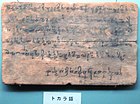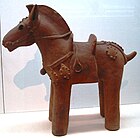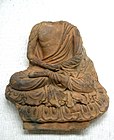Tokyo National Museum
Tokyo National Museum

Established 1872, the Tokyo National Museum is the oldest and largest museum in Japan. The museum’s collections focus on ancient Japanese art and Asian art along the Silk Road. There is also a large collection of Greco-Buddhist art.
The museum has 5 exhibition buildings:
Honkan Building (on top) provides a view of Japanese art
Highlights:

Highlights of Asian Gallery:
Hyōkeikan Building

Built to commemorate the marriage of the then Meiji Crown Prince (later Emperor Taisho), Hyokeikan was inaugurated in 1909.This building is designated as an Important Cultural Property as a representative example of Western-style architecture of the late Meiji period (early 20th century). It is open for events and temporary exhibitions only.
Heiseikan

Heiseikan serves primarily as space for special exhibitions, but also houses the Japanese Archaeology Gallery. The Japanese Archaeology Gallery on the first floor traces Japanese history from ancient to pre-modern times through archaeological objects.This gallery displays some examples of pottery, the Jōmon linear appliqué type, from around 10,000 BCE. The antiquity of these potteries was first identified after World War II, through radiocarbon dating methods: "The earliest pottery, the linear applique type, was dated by radiocarbon methods taken on samples of carbonized material at 12500 +- 350 before present" (Prehistoric Japan, Keiji Imamura).
Highlights:


Established 1872, the Tokyo National Museum is the oldest and largest museum in Japan. The museum’s collections focus on ancient Japanese art and Asian art along the Silk Road. There is also a large collection of Greco-Buddhist art.
The museum has 5 exhibition buildings:
Honkan Building (on top) provides a view of Japanese art
Highlights:
Tōyōkan (Asian Gallery)

Highlights of Asian Gallery:
Hyōkeikan Building
Built to commemorate the marriage of the then Meiji Crown Prince (later Emperor Taisho), Hyokeikan was inaugurated in 1909.This building is designated as an Important Cultural Property as a representative example of Western-style architecture of the late Meiji period (early 20th century). It is open for events and temporary exhibitions only.
Heiseikan

Heiseikan serves primarily as space for special exhibitions, but also houses the Japanese Archaeology Gallery. The Japanese Archaeology Gallery on the first floor traces Japanese history from ancient to pre-modern times through archaeological objects.This gallery displays some examples of pottery, the Jōmon linear appliqué type, from around 10,000 BCE. The antiquity of these potteries was first identified after World War II, through radiocarbon dating methods: "The earliest pottery, the linear applique type, was dated by radiocarbon methods taken on samples of carbonized material at 12500 +- 350 before present" (Prehistoric Japan, Keiji Imamura).
Highlights:
Hōryū-ji Hōmotsukan (The Gallery of Hōryū-ji Treasures)

Art works from the 319 Hōryū-ji Treasures, originally donated to the Imperial Household by Hōryū-ji in 1878, are exhibited in six rooms. The reference room on the 2nd floor mezzanine houses the "digital archive" which allows visitors to view the entire collection of Horyuji Treasures on computer with explanations provided in Japanese, Korean, Chinese, English, French, and German. A restaurant is located on the first floor.
General Information:
Location:13-9 Uenokoen, Taito, Tokyo 110-8712, Japan
Hours:
9:30 - 17:00 (last admission at 16:30)
General Information:
Location:13-9 Uenokoen, Taito, Tokyo 110-8712, Japan
Hours:
9:30 - 17:00 (last admission at 16:30)
Kuroda Memorial Hall: trough the year 9:30 - 17:00 (last admission at 16:30)
Research and Information Center: Monday-Friday, 9:30-17:00
Research and Information Center: Monday-Friday, 9:30-17:00
- Regular exhibitions will be open until 21:00 on Fridays, Saturdays from April 2017.
- Regular exhibitions will be open until 21:00 on April 30, May 3, 4, 7 and November 2, 2017.
- Open until 18:00 on Sundays and National Holidays, April - September, 2017.
- Open until 22:00 from September 22 and 23, 2017
* Hours are subject to change.
Closed
Mondays and year-end holidays (December 26, 2017 - January 1, 2018)
(open on Mondays that fall on national holidays, in which case the museum is closed on following day)
Research and Information Center: Closed on Saturdays, Sundays, national holidays, the last day of the month (if this falls on a holiday, the day before), and during the year-end and New Year holidays (please ask for specific dates). Also closed as occasion demands.
(open on Mondays that fall on national holidays, in which case the museum is closed on following day)
Research and Information Center: Closed on Saturdays, Sundays, national holidays, the last day of the month (if this falls on a holiday, the day before), and during the year-end and New Year holidays (please ask for specific dates). Also closed as occasion demands.
Tickets:
Adults: 620 (520) yenUniversity Students: 410 (310) yen
High/Junior High/Elementary School Students and persons under 18 and over 70: Free
- Adults accompanying children of high-school age and under receive a 100-yen discount on Regular Exhibition admissions. (Valid for up to two adults with each child.)
Kuroda Memorial Hall:
Admission free. Kuroda Memorial Hall is located at the corner westward from the Main Gate of the museum.

























Comments
Post a Comment